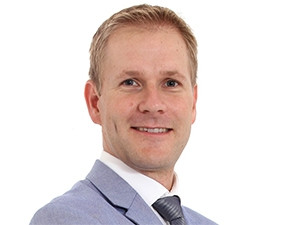
A multitude of new technologies have arrived on the scene in the past few years -promising to revolutionise the healthcare industry and enhancing patient care in many different ways.
Many hospitals, clinics, practices or community health centres are still caught in a state of inertia, as they grapple with how to embark on the transformational journey of integrating the latest technology which will add value to both the facility and the patient.
So says Johann Joubert, sales manager, Africa at T-Systems SA. He explains this digital transformational journey begins with administration within healthcare facilities such as digitising paper-based and manual processes into digital systems that can be shared within the medical facility, other branches and with specialist doctors, pathologists, or pharmacists.
This can be done through using the software platforms that seek to integrate processing, hospital care management and enrolment data into an enterprise-wide system that could form the foundation for sharing data across the entire care continuum, says Joubert.
He points out healthcare facilities should invest in good quality technology not only to monitor patients but also to perform administrative duties such as digitally allocating admitted patients to available beds, medical aid invoicing, pre-authorisation for surgery etc.
Joubert notes this adaptation can stop unnecessary administrative costs being incurred in the future while increasing revenue streams of medical facilities.
"With less reliance on 'clipboards and paper', operational efficiencies and synergies start to emerge, medical staff will be able to process greater numbers of patients - increasing revenue through service optimisation.
"By integrating patient care data with the financial, logistics, and human resource systems, the entire patient lifecycle is better managed," he explains.
He adds management will be able to see more clearly into a facility's operations, to calculate the profitability of each business area, each medical service or equipment asset, as well as revenue-per-bed.
Now freed from paper-based records and disjointed processes, the facility can ensure sound compliance with all legal, legislative and governance requirements, reduce costs and increase revenue.
More revenue
Valter Adao, MD for Deloitte Digital Africa, says few sectors in the world are as dependent on digitisation of administrative purposes more than the healthcare sector.
He adds the healthcare industry in SA is heavily dependent on technological innovations and these will increase revenue while improving customer experience.
"There is a drive to move towards admin sharing of data between doctor and patient, and doctor and specialist. Hospitals are run more like banks, if you need a loan, its followed by paper admin, if one needs a certain medical procedure, this is followed by paper admin, explains Adao.
He adds in future radiologists could be sharing patient information with GPs through integrated medical systems.
This system, he adds, is already in use by medical aid schemes such as Discovery and Liberty. They have adopted paperless solutions in recording patient information and access information digitally to see if the treatment is valid for the prices charged and also to review a patient's medical history.
Joubert says the use of remote patient monitoring technology - that enables the monitoring of patients outside of conventional clinical settings - allows the facility to make more revenue.
"Additional revenue streams will begin to develop, as patients can be sent home for the final stages of their recovery - recuperating at home while having vital signs, blood pressure, and other health aspects measured by wearable or mobile technologies," adds Joubert.
He says by shifting more patients' after-care requirements to a home environment, the facility is able to treat more incoming patients at its premises at a faster pace.
"With better digital interactions come healthier, happier patients, and ultimately higher revenue-per-bed," concludes Joubert.
Share